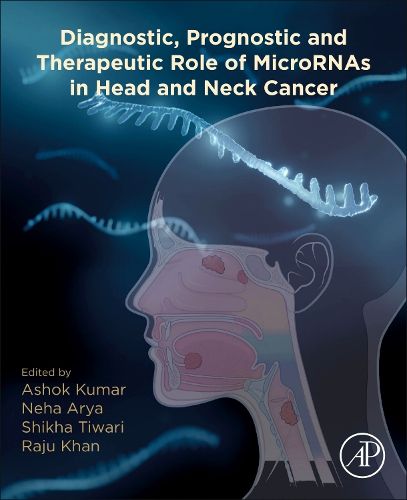Readings Newsletter
Become a Readings Member to make your shopping experience even easier.
Sign in or sign up for free!
You’re not far away from qualifying for FREE standard shipping within Australia
You’ve qualified for FREE standard shipping within Australia
The cart is loading…






Diagnostic, Prognostic and Therapeutic Role of MicroRNAs in Head and Neck Cancer provides detailed information on various miRNA-based approaches for the diagnosis, prognosis, and treatment of HNSCC. The book encompasses various miRNA-based point-of-care diagnostics and drug delivery systems for HNSCC, along with information on clinical trials for improved clinical outcomes in HNSCC patients. In addition, it provides a comprehensive overview of currently available miRNAs associated with HNSCC and their extensive application for early diagnosis, prognosis, and treatment. Scientists and clinicians looking to win the battle against HNSCC will benefit from the book's sections on early diagnosis to improve treatment, increase treatment response rates, and reduce mortality rates. Recently, miRNA-based diagnostics and therapeutics have gained considerable attention among the scientific community. MiRNAs are known to have great potential as biomarkers for early diagnosis, prediction, and prognosis of HNSCC, and play a role in development of targeted gene therapy.
$9.00 standard shipping within Australia
FREE standard shipping within Australia for orders over $100.00
Express & International shipping calculated at checkout
Diagnostic, Prognostic and Therapeutic Role of MicroRNAs in Head and Neck Cancer provides detailed information on various miRNA-based approaches for the diagnosis, prognosis, and treatment of HNSCC. The book encompasses various miRNA-based point-of-care diagnostics and drug delivery systems for HNSCC, along with information on clinical trials for improved clinical outcomes in HNSCC patients. In addition, it provides a comprehensive overview of currently available miRNAs associated with HNSCC and their extensive application for early diagnosis, prognosis, and treatment. Scientists and clinicians looking to win the battle against HNSCC will benefit from the book's sections on early diagnosis to improve treatment, increase treatment response rates, and reduce mortality rates. Recently, miRNA-based diagnostics and therapeutics have gained considerable attention among the scientific community. MiRNAs are known to have great potential as biomarkers for early diagnosis, prediction, and prognosis of HNSCC, and play a role in development of targeted gene therapy.